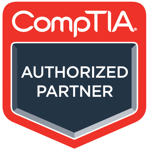Course outline
Duration : 5 days
| ||
| |
Audience |
|
Prerequisites |
|
Objectives | CySA+ course you will focus on the following four cyber security domains:
|
Contents | Threat Management
Vulnerability Management
Cyber Incident Response
Security Architecture and Tool Sets
|
